Matador Network's Blog, page 1196
December 21, 2018
Best month for cheap flights
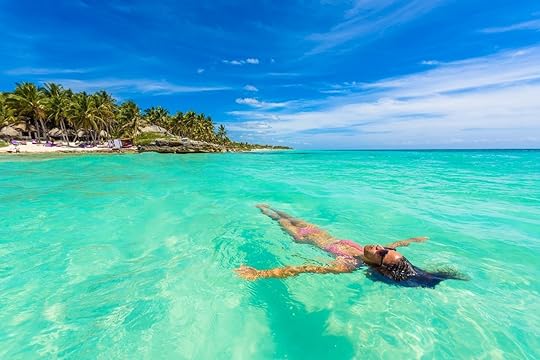
Traditionally, January is the epitome of winter misery. The bright lights and festive music of Christmas have all come down, and all you’re left with are 4:00 PM sunsets and an ice scraper to keep you warm. Tack that on to credit card bills from the holidays that literally make you avoid opening your mailbox, and it’s time for a little escape from reality.
You shouldn’t let those astounding holiday bills keep you from it, either. Not that we’re preaching financial irresponsibility, but according to Skyscanner, January is the best time to score cheap flights all year. The travel search company that tracks billions of airfares took a look at its historic data and found January to be the king of the affordable skies with domestic tickets averaging a paltry $257.
And, really, what’s another few hundos on the Amex anyway?
This, then, begs the question where you should go. Skyscanner did the legwork for that one too, scoping the cheapest domestic and international destinations for flights leaving between now and March.
On the domestic side, Seattle leads the pack with an average airfare of $261, $54 cheaper than the rest of the year. Some might say this puts you smack in the middle of the city’s perpetual gloom,but we say it lets you see the city like the locals. If you’re not sold on Seattle, Phoenix is actually tolerable in the winter, and flights are $35 cheaper than normal at $284. Even a beach vacation to Florida won’t bankrupt you, with flights to Tampa going for $236, down $33. Here’s the rest of the domestic cheap-flight leaderboard:

Photo: emperorcosar/Shutterstock
Seattle — $261 ($54 in savings)
New York — $256 ($43)
Chicago — $219 ($40)
Atlanta — $220 ($35)
Phoenix — $284 ($35)
Tampa — $236 ($33)
San Francisco — $277 ($29)
Washington, DC- — $266 ($28)
Los Angeles — $284 ($20)
Denver — $219 ($19)
If you’re keen to leave the country during the gloomy months, an average ticket will cost you about $702. Not exactly a bargain, but some cities are still exceptionally inexpensive. Topping the list is Barcelona, whose beaches might not be what you’d call “scorching” this time of year, but also won’t be too crowded either. Flights there average $444, $264 less than normal. The city of lights will be lit up longer (because, you know, shorter days), and flights to Paris will be only $489, down $198. And if all the snow has you thinking about laying on a beach in Mexico, Cancun ($459), Mexico City ($352), and Guadalajara ($319) all have cheap flights too. Here are the rest of the international leaders:

Photo: Catarina Belova/Shutterstock
Barcelona — $444 ($264 cheaper)
Paris — $489 ($198)
Dublin — $479 ($180)
San Salvador — $499 ($145)
Guadalajara — $319 ($90)
Mexico City — $352 ($49)
Reykjavik — $376 ($38)
Cancun — $367 ($27)
San Jose — $459 ($25)
San Juan — $347 ($8)
So don’t let the winter blues keep you cooped up. January gives us reason to rejoice with some of the cheapest airfares of the year. Skyscanner recommends booking nine weeks out to get the best deals, so as soon as you’ve cleaned up your life after New Year’s, start shopping. And don’t be afraid to tell all the gloomy faces at work why you’re so happy. 

More like this: Where to travel this January
The post January will be the cheapest month of the year to fly. Here’s where to go. appeared first on Matador Network.

Best way to see Ha Long Bay, Vietnam
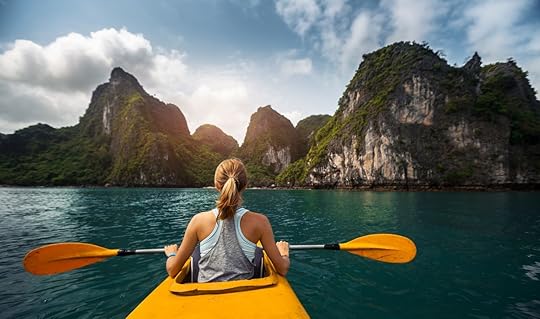
One minute you’re marveling at the countless towers of rock rising up from the emerald green waters of Vietnam’s Ha Long Bay. And that’s all you get. Just one minute. Because every other second of your two-night boat excursion has you surrounded by countless other tour boats rather than the natural wonder you came to observe. Even at night, the serenity is usually shattered by an ‘OOMPH, OOMPH, OOMPH’ echoing off the moonlit cliffs from a closely anchored party boat.
There is a better way to experience Ha Long Bay (also referred to as Halong Bay) and enjoy its beauty. After years of living and working in these very parts, I’m about to reveal a trade secret (or six) that the merchants in the city don’t want you to know. Here’s how to explore Ha Long Bay the way others don’t.
1. Skip the junk tours.
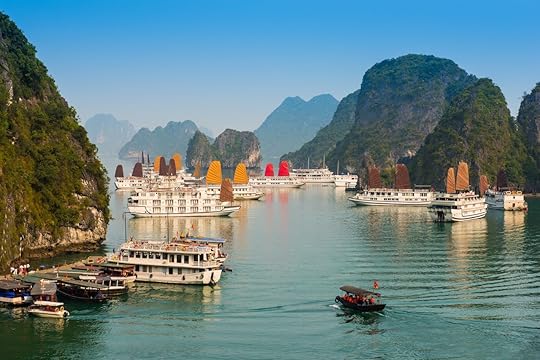
Photo: Siwawut/Shutterstock
“Junk” is actually the name for the enigmatic Asian ships that ply the waters of Ha Long Bay — not a tour rating. Nonetheless, you shouldn’t rush to buy your tour boat tickets while in Hanoi. Most of the tour operators in the nation’s capital, a four-hour bus ride from Ha Long, will tell you that you need to purchase tickets to the natural attraction with them. But those junk boats all set sail at the same time, jostle for first position out of the harbor, and ultimately all moor in the exact same spot every day. Skip the junk tours and opt for these experiences instead.
2. Meet the locals in Hai Phong City.
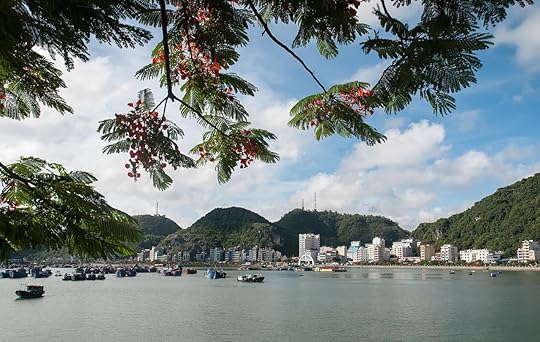
Photo: thi/Shutterstock
Few foreign tourists make the trip to this city on the edge of the bay — yet locals think of it as such a hot spot that they call it, Bãi Cháy, or “beach fire.” Although your backdrop is a city, Hai Phing’s beaches and sprawling harborfront promenade come with ample views of the jagged island bay that sprawls out across the horizon.
The city also comes with vibrant local traditions. You’ll be able to interact with vacationing local Vietnamese here who greatly outnumber sweaty, sleeveless backpackers. Come in late April and you can partake in the Carnival Ha Long, the city’s homage to the area’s beauty and sacred past. The “carnival of the descending dragon” explodes onto the streets in a mass of cultural vibrancy in the form of fire-breathing beast effigies. With a smile and a xin chao (hello) it’s almost impossible not to make a local friend who can translate for you the float-filled parade’s depiction of Ha Long’s history.
3. Disappear in a kayak from Cat Ba Island.

Photo: Dudarev Mikhail/Shutterstock
If you’re catching the ferry from Hai Phong to Cat Ba Island, be prepared to eventually get dropped off in the middle of nowhere and use a xe ôm, or motorbike hug, service into the main town 20 minutes away. The ensuing ride will be nothing short of spectacular as you two-wheel through lush rolling hills punctuated by sheer limestone cliffs. You’ll find plenty of hotels and eco retreats dotted here and throughout the 110-square-mile island.
While it’s a beautiful spot to call home base, the real appeal of visiting Cat Ba is the chance to rent kayaks and disappear into private corners of the bay. A strong, 30-minute paddle will get you deep into Ha Long Bay and its 1,600 islands — and, if you have no navigation skills, into serious trouble. Make sure you know how to use a compass, waterproof map, and the sun for guidance through this maze of identical-looking twists and turns.
Paddle beneath any number of wave-worn arches to enter lagoons that feel long lost in time, as long as you yourself are not! Some kayak providers in the main town will rent kayaks overnight for an unlisted price — as it’s not technically allowed. Just make sure to plan such excursions in advance as they will call the coast guard for kayakers who don’t return by a set time.
4. Go with locals who really know the bay.
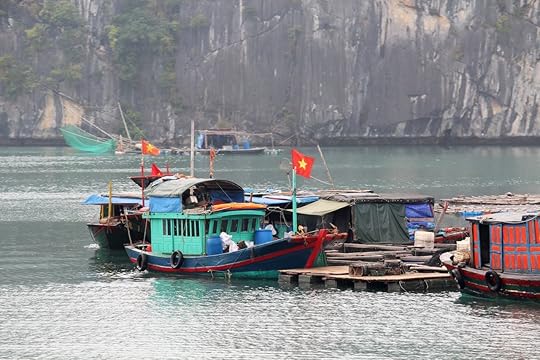
Photo: Anastasia Kamysheva/Shutterstock
Cat Ba is is still very much a fisherman’s island, which is evident by the armada of boats in the main harbor, masts strung with light bulbs in preparation to night-fish for squid. These captains can be found during the daytime in the island’s main town and will more often than not be happy to accommodate tourists on free-roaming daytime tours — if the language barrier can be broken. While these seamen will undoubtedly keep you from getting lost, remember that they’re not licensed tour operators, so proper safety precautions must be taken. Go with a group, tell people back home who you are going with (perhaps send a photo), and let them know when you will be returning.
5. Stay at the Castaways island.

Photo: Halong Bay Castaway Tour/Facebook
Yes, I’ve tucked a “commercial” option in this off-the-beaten-path guide. But the Castaway Tour’s private island is extremely remote and comes complete with a white-sand beach cloaked by limestone cliffs. It’s also far from any other tourists — except the 50-plus backpackers in your group, that is.
Local fisherpeople who live “a few blocks down” in quaint floating huts are the only other people within reach of the free-use kayaks. Daytimes are spent indulging in wholesome outdoor activities inclusive of your ticket, such as whizzing behind a speedboat either in tubes or on your feet, most importantly through the fantastical landscapes. That said, the night times are anything but wholesome — with parties fueled by cheap booze sold in one of the world’s most remote and picturesque beach bars.
6. Discover where the baby dragon slept: Bai Tu Long Bai.

Photo: aksenovden/Shutterstock
In local mythology, this is where the descending dragon’s children came to sleep, and this is the best option for real adventure seekers. Ha Long Bay’s immense fame is a sparkling attraction to the average traveler, blinding them to the untouched treasures lying only 12 miles to the northeast: Bai Tu Long Bai.
Here, numerous looming limestone walls coated in shrubs emerge from a peculiarly green ocean, thanks to the area’s high mineral content. It’s enough to satiate anybody’s desire for the renowned scenery of its more famous kin in Ha Long. More remote and less visited, Bai Tu Long Bai has few hotels or guest services. Tours also tend to be much pricier — but intrepid thrill-seekers will have all the skills and ingenuity needed to easily gain access, without the need of a tour guide. And without any of the crowds. 

More like this: The 7 most overlooked destinations in Southeast Asia you need to visit
The post 6 ways to explore Ha Long Bay, Vietnam, the way most tourists don’t appeared first on Matador Network.

US to punish Chinese officials

In an effort to put pressure on the Chinese government with regard to its human rights violations in Tibet, the Trump administration has introduced the Reciprocal Access to Tibet Act, which punishes Chinese officials who prevent American officials, journalists, and other citizens from traveling to Tibet. Tibetan territory is under heavy watch by Chinese security officials, who make it difficult or impossible for foreigners to visit. The Communist Party has banned foreign diplomats from going to central Tibet without official permission or as part of a propaganda tour, and regular travelers can’t access the region without an organized tour group.
The new law is meant to identify which Chinese officials are responsible for placing restrictions on foreign travelers, and then either revoke their US visas or make it impossible to obtain one. Ultimately, the law is intended to encourage China to loosen the limits they have imposed on Tibet travel. Massachusetts Representative Jim McGovern said in a written statement, “For too long, China has covered up their human rights violations in Tibet by restricting travel. But actions have consequences.”
This harsh stance on China’s Tibet policy has drawn rare bipartisan support in the US, leading to the legislation’s easy passage. Americans overwhelmingly oppose China’s oppression of the Tibetan people, and the suppression of their culture. Chinese officials have demolished the homes of Tibetan nuns and monks, quelled Tibetan language education, and tried to destroy Tibetan individualism in what the Dalai Lama calls “cultural genocide.” By restricting travel, the Chinese government hopes to keep these atrocities out of the public eye. 
H/T: The New York Times

More like this: My quest is to see all species of wild cats in their natural habitat. Here’s what I saw in Tibet.
The post New US law will punish Chinese officials who restrict travel to Tibet appeared first on Matador Network.

White Christmas on Mars

This is the last place you’d ever expect to find a white Christmas, but according to these photos, Mars is actually experiencing more snow and ice than some parts of the United States. The Korolev crater, near Mars’s north pole, is 50 miles across and currently filled with a layer of ice nearly a mile thick. The crater was named after Sergei Korolev, a rocket engineer and spacecraft designer who was the architect of the Soviet Union’s space program. He played an instrumental role in organizing the first interplanetary missions to the Moon, Mars, and Venus, and also worked on the Sputnik program, which was responsible for the world’s first artificial satellite.

Photo: ESA
Contrary to popular belief, Mars does have distinct seasons. The crater, however, is somewhat of a unique geographical feature. When air travels over the ice, it cools and sinks, causing a layer of cold air that sits directly above the ice. This cold layer acts as an insulator, protecting the ice from warmer air and keeping it from melting. As a result, the crater is completely filled with ice all year-round.

Photo: ESA
The pictures were taken by the Mars Express High-Resolution Stereo Camera — a tool used by the European Space Agency (ESA). The Mars Express Mission, launched back in June 2003, is the ESA’s first foray into interplanetary travel. 
H/T: BBC News

More like this: These images from NASA will rock your world
The post White Christmas on Mars: ESA releases new photos of massive ice crater appeared first on Matador Network.

December 20, 2018
Activities on the Papagayo Peninsula
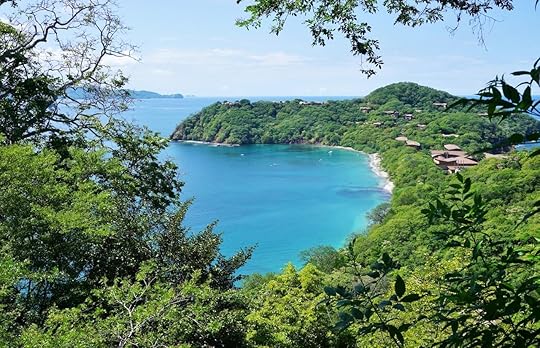
Jetting out from the northwest corner of Costa Rica’s Guanacaste Province into the Gulf of Papagayo is Peninsula Papagayo. The region, located fewer than 40 minutes from the Liberia International Airport, may be known for its high-end luxury resorts — but it enjoys some of the best year-round weather in Costa Rica and is heavily protected by the country’s strict environmental laws. The result is an eco-friendly playground of high-end resorts bursting with wildlife, relaxing beaches, tropical forest, and an endless supply of outdoor options. Here’s why Peninsula Papagayo is an outdoor lover’s dream that’s worth the splurge.
Private land means less-busy beaches.
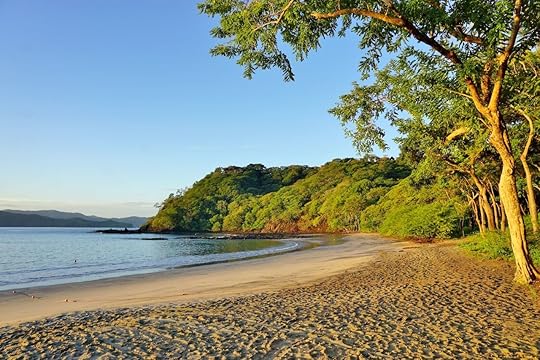
Photo: EQRoy/Shutterstock
Although Peninsula Papagayo is comprised of 1,400 acres of private land, all beaches in Costa Rica are public. You can access beautiful beaches like Playa Nacascolo, Playa Manzanillo, Playa Blanca, and Playa Cabuyal, and the private land means they’re less crowded than many other areas. Also, with the area’s protected topography of lush green coves, waves along the peninsula’s 30 beaches are typically gentle. This makes them great for families with small children and keeps the waters warm year round.
Playa Nacascolo is a serene, lake-like haven sheltered inside Culebra Bay. Because it isn’t directly connected to one of the peninsula’s resorts, the beach offers a more natural feel as the calm waters gently wash up on the sand with dense tropical forest in the background. If the sun gets to be too much, seek shade under a nearby tree. The best part is that Playa Nacascolo is accessible via free shuttle bus from 8:00 AM to 5:00 PM daily.
The options for water sports are endless.
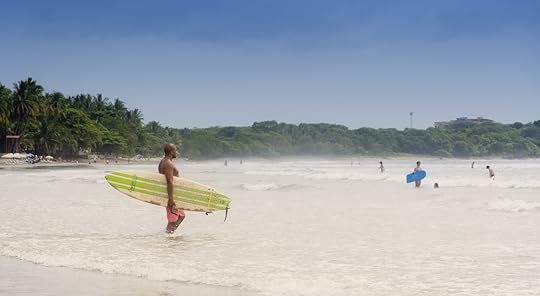
Photo: riekephotos/Shutterstock
Just because the waves in this area are calmer doesn’t mean you can’t have fun in the water. More than 20 dive sites dot the Gulf of Papagayo, including the popular Monkey’s Head rock — appropriately named for the shape it resembles — off the coast of the Four Seasons Costa Rica. Several species of rays, including spotted eagle rays, are seen here as well as large schools of fish. The area’s volcanic history created an endless supply of nooks and crannies among the coral for fish and other tropical creatures to hide in and swim through. Besides a colorful supply of fish, you might spot bull sharks, manta rays, and octopus among the gulf’s waters.
The calm sea is ideal for casual exploring via kayak or canoe. Paddle through the open waters and explore nearby secluded beaches like Playa Huevo and Playa Palmares, which are only accessible by boat. Deep-sea fishing is also popular with marlin, sailfish, and roosterfish all common to these waters.
Surfing is certainly an option off the peninsula — particularly for beginners — but more experienced surfers typically venture elsewhere. Top options are Playa Grande; Playa Tamarindo, a popular spot equally fun for novice and expert wave riders; and Witch’s Rock, one of the best surf breaks in the country.
Hiking trails abound with national parks a day-trip away.

Photo: Wollertz/Shutterstock
If the coastline isn’t your cup of tea, Peninsula Papagayo has 13 miles of trails ideal for hiking or biking among a plethora of wildlife in one of the few remaining tropical dry forests on the planet. Paths vary from easy walking trails near roads to tougher hikes deeper in the forest. Mountain biking is more rugged on the unpaved dirt paths.
No matter which path you pick, keep your eyes and ears peeled for monkeys chattering, toucans chirping, and the sheer beauty of many of the 1,500 species of orchids native to Costa Rica. Barra Honda National Park, Guanacaste National Park, Santa Rosa National Park, and Rincon de la Vieja National Park are all a day-trip away, as well.
You can do your best Superman impression above the forest.
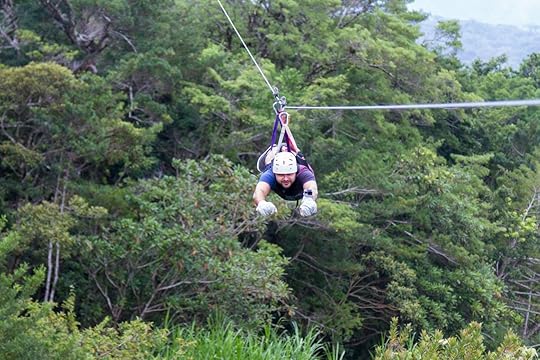
Photo: Wollertz/Shutterstock
Fun fact: Modern zip-lining was made popular in the 1970s by wildlife biologists studying the forests of Costa Rica. This mode of transportation not only gave them a bird’s-eye view of what they were surveying but also didn’t disrupt the environment, resulting in the eco-friendly zip-line tours we’re familiar with today.
Diamante Eco Adventure Park, located near Matapalo Beach, is a one-stop shop for adventure and home to Costa Rica’s longest oceanfront zip-line. Soar high above the treetops with the ocean in the background on the park’s zip-line course, which features a “Superman” line where you lay on your stomach while flying (faster than a speeding bullet) toward the coastline. The course also includes a mini freefall, as well as an Indiana Jones-esque hanging bridge over crocodiles located in the park’s animal sanctuary.
Wildlife sanctuaries are close by, too.

Photo: Inspired By Maps/Shutterstock
There are plenty of options to see wildlife throughout Costa Rica, whether you’re snorkeling, swimming, or visiting one of the many government-regulated (SINAC) conservation areas. Among its many features, Diamante Eco Adventure Park is home to an animal sanctuary where you can learn about the country’s fauna by walking through a butterfly observatory; watching jaguars, pumas, and monkeys roam their habitats; and even meeting a local celebrity: Lucy, a two-toed sloth. The peninsula is also working with Costa Rican government agencies to open a macaw sanctuary to help the unfortunately endangered bird species thrive and survive in its homeland.
You can play an Arnold Palmer Signature golf course.

Photo: Four Seasons Resort Costa Rica at Peninsula Papagayo/Facebook
For a more relaxing activity, depending on your handicap and possible temper, the area offers a unique golf experience. Located within the Four Seasons Resort, the Ocean Course at Peninsula Papagayo is an Arnold Palmer Signature Golf Course that has also been named one of the “Top 100 Courses Outside the United States” by Golf Digest. This 18-hole, par-72 championship course sits on the tip of the peninsula.
Continuing the trend of wildlife conservation throughout the country, the Ocean Course is a Certified Audubon Cooperative Sanctuary. Enjoy the local trees and flowers while keeping your eyes open for birds and white-faced monkeys nearby. Don’t forget to focus on your golf game, too.
And you can always just relax… poolside.

Photo: Andaz Costa Rica Resort at Peninsula Papagayo/Facebook
With Peninsula Papagayo chock-full of all-inclusive resorts, the options for poolside lounging are endless. Sure the Four Seasons might be over $1,000 per night for a couple, but come during the summer months, and the Andaz Costa Rica can be as low as $300 per night. While the rainy season runs from May to October, Peninsula Papagayo is in the drier northwest corner of Costa Rica. When the rains do come, they are usually only in the afternoons or evenings.
The newly opened Planet Hollywood Beach Resort is also less than half the cost of the Four Seasons and offers up two pools and a hot tub surrounded by lounge chairs and private cabanas. There are two pool bars — Point Break and Point Break: The Sequel — so getting drinks is just as accessible in the water as it is poolside.
Since most houses on the peninsula are high-end villas, Airbnbs are also pricey. However, we found a three-bedroom Airbnb apartment in the Marina Papagayo that sleeps six, working out to $163 nightly per person. With the Peninsula Papagayo’s quiet beaches, green forests, protected waters, and endless outdoor options, you might find it’s worth the splurge. 

More like this: The 7 most amazing waterfalls in Costa Rica
The post Costa Rica’s Peninsula Papagayo is the perfect balance of outdoor adventure and luxury appeared first on Matador Network.

Denmark's new citizenship criterion
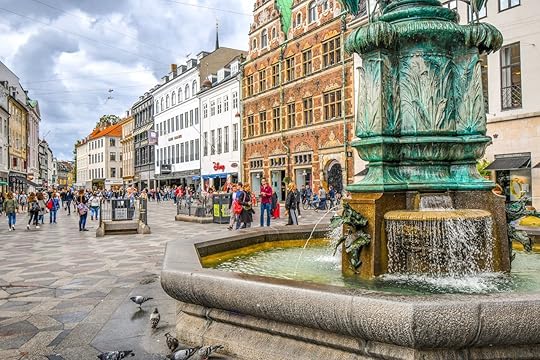
In an effort to encourage cultural assimilation, the Danish government is requiring all new citizens to shake hands with officials at the naturalization ceremony. The law is clearly aimed at Muslims, whose religion forbids touching members of the opposite sex. Martin Henriksen, a right-wing lawmaker belonging to the Danish People’s Party, told The New York Times, “If you arrive in Denmark, where it’s custom to shake hands when you greet, if you don’t do it it’s disrespectful… if one can’t do something that simple and straightforward, there’s no reason to become a Danish citizen.” Denmark’s integration minister Inger Stojberg echoed a similar sentiment, saying that the handshake is a “visible sign that you’ve taken Denmark to heart.”
Similar laws have gone into effect in countries like Switzerland and France that are also under pressure from right-wing influence, and it has prompted an understandably irate response from more moderate politicians. Thomas Andresen, mayor of Aabenraa, said, “It’s against my ideology and conviction to have to force other people to have body contact.” He’s even taking steps to find loopholes in the law, like having officials of both genders present at naturalization ceremonies. “I’d be sad to see us portrayed as a xenophobic country and a xenophobic people,” he said, “because we absolutely are not.” Other mayors, like Mogens Jespersen of Mariagerfjord, said they would accept a nod instead of a handshake.
One aspiring Danish citizen, Billy O’Shea of Ireland, is currently waiting for an answer to his citizenship application but says he will reject the citizenship if forced to shake hands. “Respect is something that occurs between equal citizens,” he said in an email. “We can’t shake each other’s hands if one of us are on our knees.”
Gaining Danish citizenship requires legal residence of nine years, financial self-sufficiency, and passing both a Danish language test and a Danish politics, history, and society test. All of that, however, could prove moot if the applicant refuses a handshake. 
H/T: The New York Times

More like this: Patriotism defines America, but what about the rest of the world?
The post Denmark now requires a handshake to obtain citizenship in defiance of Muslim custom appeared first on Matador Network.

Long Island's best hiking trails
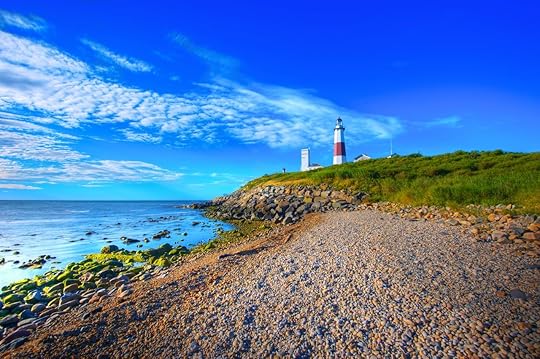
From its beaches to its bagels, Long Island has quite a few things that warrant bragging rights. Among the island’s better-kept secrets, kept from outsiders at least, are the incredible hiking trails. Seasoned hikers and beginners alike will appreciate the variety of trails this island has to offer. From tip to tip, these are the six trails you need to get your boots on.
Bethpage Bikeway Trail
Length: 12 miles

Photo: Joe Trentacosti/Shutterstock
Starting from Bethpage State Park and ending at the Massapequa Preserve, the Bethpage Bikeway Trail is about 12 miles long. This paved, mostly flat, out-and-back trail sees some pretty heavy traffic through all seasons, save particularly fierce winter days. Head out early in the morning to avoid a crowd. Walkers, runners, bikers, and dog walkers alike share the trail, so be mindful of the ‘on your left’ call-outs when you hit the pavement.
Take a break or have a snack at one of the benches along the trail, and don’t overlook trail etiquette — as with any outdoors journey, leave no trace. Dogs are allowed but should be kept on a leash, and be sure to pick up whatever your four-legged friend might be puttin’ down. A fun local’s tip for those bringing a dog: There are a few streams that dogs often can play in along the trail, a nice relief in the heat of the summer.
Cold Spring Harbor
Length: Five miles
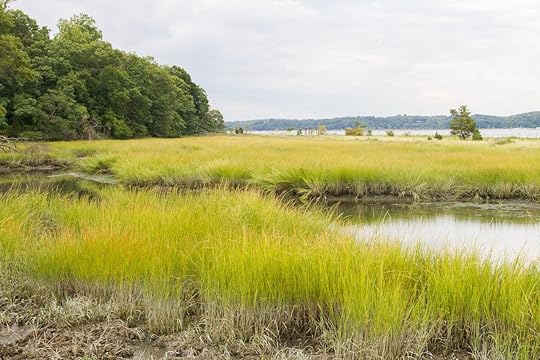
Photo: flashbacknyc/Shutterstock
Cold Spring Harbor packs a powerful punch into its nearly five-mile out-and-back trail. With stairs and some steep hills, this hike — which is manageable for most fitness levels — will certainly get your heart pumping along the way. While you won’t have to dodge any bikers here, there will undoubtedly be plenty of hikers and their four-legged friends to work your way around. While dogs are required to be leashed, you’ll likely notice that some dogs will not be.
This trail is heavily trafficked, especially in the morning to mid-afternoon, though less so in the winter months. The small parking lot next to the Cold Spring Harbor Library fills up fast. Hikers who want to avoid a big crowd, or at the very least find parking, should plan to arrive by 8:30 AM. The trail can also be picked up from Lawrence Hill Road, and though street parking at this point is an option, there’s minimal space available. Winter hiking on this trail is fun, but a little treacherous when the ground is covered in snow. If you want to brave the cold temps in favor of a nearly empty trail, pack crampons and bring a trekking pole for added safety and stability.
Nassau-Suffolk Greenbelt Trail
Length: 20 miles

Photo: James Parascandola/Shutterstock
This trail actually connects the Cold Spring Harbor State Park trail and the Bethpage Bikeway, making it a perfect stretch for those who really want to put some miles in. Altogether, the out-and-back Nassau-Suffolk Greenbelt Trail covers nearly 20 miles. As it encompasses two very popular trails along its path, it’s safe to say this is moderately to heavily trafficked, depending on your route. If you plan to bike your way down the trail, keep in mind that it’s not entirely paved. A mountain bike may be a better bet in some stretches than a road bike, particularly through Stillwell Woods.
Stony Brook
Length: Varies

Photo: Steve Melnyk/Shutterstock
Avalon Park and Preserve offers a collection of relatively short, sweet, and scenic trails and walkways throughout its eight acres. The variety of trail options include a handicap-accessible boardwalk trail, though it’s worth mentioning that the accessible area only runs for a short stretch. Summer and fall draw the biggest crowds, but the fall foliage over the park’s pond makes it well worth joining the masses.
While Avalon is accessible and free all year round, it’s only open during daylight hours. In winter, hikers should take note that dusk, and thus the park’s closing time, come early. To beat the crowds, head out in the morning hours. The old adage holds true: the early bird gets the worm, which in this case is a much quieter trail. Dogs are welcome throughout the park and preserve though, as elsewhere, they must be kept on a leash.
Stump Pond Loop Trail
Length: Six miles

Photo: essence729/Shutterstock
Tucked within Blydenburgh Park, the Stump Pond Loop Trail might arguably be one of the best trails to enjoy fall foliage with water views. At a little over six miles, this trail is generally lightly trafficked through all seasons, making it a great spot to enjoy any time of day. Its terrain is mostly flat throughout, so it’s accessible for all skill and fitness levels. Smithtown is enjoyed by quite a few varieties of four-legged species. Dogs are welcome, and there’s even a large fenced-in dog park here. Horses also use the Stump Pond trail, further emphasizing the need to keep dogs on leashes for everyone’s safety.
Don’t be surprised if you spot deer along the way, too. Keep in mind that during the warmer months, it’s easy to pick up ticks on this trail, so be sure to check yourself and your pup. Also, be mindful and aware of trail markers on trees as this trail can get a bit confusing at some points. Use the pond as guidance on this loop trail if you’ve gotten off track.
Montauk Point and Camp Hero State Park
Length: Varies

Photo: mnapoli/Shutterstock
It doesn’t get much more Long Island than a summer day spent in Montauk. There’s no shortage of hikes to enjoy throughout Montauk Point and Camp Hero State Park, and surprisingly, they are generally only moderately trafficked. As is the case for many of these hikes, it’s best to head out in the morning to have the trail to yourself or to share the trail with just a handful of other hikers.
The out-and-back Oyster Pond Trail offers a nice walk on the beach, and, of course, great water views. At just over two miles, it’s not a strenuous hike either. To switch it up, head out to the end in the winter months to catch a glimpse of seals. The popular Seal Haul Out Trail is easy to navigate, and you can access it from the Oyster Pond Trail to add some mileage to the original hike. This short-and-sweet, out-and-back hike only adds a mile. Even if you don’t get to spot a seal, the views of the sound are reason enough to do it. 

More like this: Why Long Island is the relaxing weekend escape you never thought about taking
The post From tip to tip, these are Long Island’s best hiking trails appeared first on Matador Network.

9 deserts you've never heard of

Desert life is harsh and unforgiving, and extended stays are typically only for acclimatized locals or the most adaptable of plant and animal life. But with more and more destinations being overrun by tourists, inhospitable and crowd-free spots like the Atacama desert and Antarctica are on the rise.
There are notable and unusual deserts on each of the world’s seven continents, so travelers in search of some serious peace and quiet won’t have trouble finding what they need. Here are nine lesser-known deserts out there for travelers who like to venture off the overly trodden dunes.
1. Dasht-e Lut, Iran

Photo: Jakob Fischer/Shutterstock
Iran’s Dasht-e Lut, also known as the Lut Desert, is regarded as one of the hottest and driest places on Earth. The surface temperature in the desert can reach as high as 159 degrees Fahrenheit, and although this puts its name in some obscure record books, it also means that it’s one of the least-visited places in the world.
That’s not to say it’s a place for extreme travelers to avoid altogether. In winter, temperatures drop to below zero, ironically making it slightly more manageable. The barren landscape is dotted with fascinating rock formations, salt plains, massive dunes, abandoned caravanserais, and hardy plant and wildlife, which makes it a remarkable place to check out.
2. Rangipo Desert, New Zealand

Photo: travellight/Shutterstock
The Rangipo Desert in New Zealand receives a reasonable amount of rainfall each year, but the area’s poor soil quality owing to violent volcanic eruptions 20,000 years ago and persistent dry winds make it an anomaly in the generally lush country.
Most of Rangipo is uninhabited, given the infertile land and extreme climate, and there’s also only a single sealed road that runs through it known as Desert Road. The scenery was impressive enough to serve as the backdrop for certain scenes in the Lord of the Rings movies, and the heavy snowfalls produce snow-capped peaks that contrast perfectly with the landscape below.
3. White Desert, Egypt
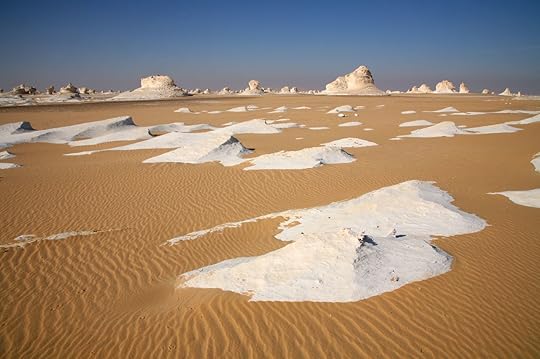
Photo: N Mrtgh/Shutterstock
Though just a few hours away from the Egyptian capital of Cairo, the White Desert feels like it’s located on another planet. That’s because it’s home to bizarre weathered chalk rock formations that look almost curated in their appearance.
Many of the formations have been given names referring to their appearance — often items of food like “ice cream cone” and “mushroom.” The desert is largely devoid of vegetation, adding to its feeling of otherworldliness, but it’s surprisingly accessible to visitors. The nearest town of Farafra is just 28 miles away, and it’s possible to camp overnight to witness the changing colors of the landscape during dusk and dawn.
4.Tankwa Karoo, South Africa
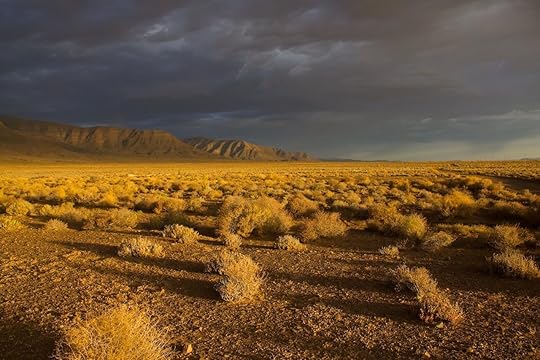
Photo: Kate Higgs/Shutterstock
South Africa’s Tankwa Karoo has been preserved as a national park since 1986, owing to its stark natural beauty and fragile ecosystem. Despite being the home of the annual Afrika Burn Festival every April, unique farmhouse accommodations dotting the desert, and a reasonably good road network, the region remains largely off the tourist radar.
The area receives fewer than four inches of rain each year due to the towering Cederberg mountains that block moisture-bearing clouds. Much of the land bordering the desert was once used for sheep farming, but in recent years, the protected area has expanded from 100 square miles to more than 550.
5. Kyzylkum Desert, Uzbekistan

Photo: Sergey Dzyuba/Shutterstock
The Kyzylkum Desert is located in Central Asia between Turkmenistan, Uzbekistan, and Kazakhstan and has an area of approximately 115,000 square miles.
The region receives just four to eight inches of rainfall each year and is mostly sandy, with ridges that support some desert plant life. These plants serve as pasture for domestic animals — mainly horses, sheep, and camels — belonging to nomadic tribes who move through the desert. There are several small settlements established around oases.
In the north of the country at Ayaz-Kala, overlooking the desert, are the ruins of an ancient Khorezm fortress, and there are petroglyphs at Sarmysh dating back thousands of years. The ruins of Djanpik Qala Fortress, situated in the Karakalpakstan region of Uzbekistan, are also a fascinating sight.
6. Taklamakan Desert, China
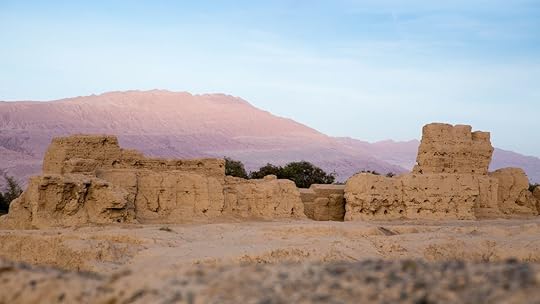
Photo: Stephanus Le Roux/Shutterstock
China’s Taklamakan Desert is one of the world’s largest sandy deserts. It covers more than 123,550 square miles across the Tarim Basin in Xinjiang, an autonomous region in the west of the country. The large mountain ranges of Tien Shan, Kunlun Mountains, and the Pamirs surround the desert while smaller peaks with unique arcs dot its western reaches.
As far as deserts go, Taklamakan is somewhat moderate — it has a maximum annual temperature of 70 degrees Fahrenheit. But rainfall is markedly low — the desert sees just one and a half inches per year in the west and 0.4 in the east — which combined with the prevailing winds often leads to hurricane-force dust storms.
Unsurprisingly, there is no permanent population living in the desert, and there is also little plant and animal life to speak of in its center, but thanks to its position along the Silk Road, there is an ancient oasis in the desert in the Turpan Basin. Visitors can reach the oasis by catching a train to Turpan and then hiring a local guide.
Wildlife also increases towards the fringes of Taklamakan, where it’s possible to spot wolves, foxes, gazelles, and the rare Siberian roe deer.
7. Tabernas Desert, Spain

Photo: StevanZZ/Shutterstock
Though Spain’s principal tourist attractions are located in the country’s populated cities and coastal resorts, the semi-arid regions are more interesting than many people realize.
The Tabernas desert is often called mainland Europe’s only desert as it is dryer and arider than anywhere else on the continent’s mainland. Just 20 miles north of the Andalusian coast, the nearby low sierras block most of the approaching rain, and in summer, the temperatures soar, reaching highs of 118 degrees Fahrenheit. Dry season rainfall seldom registers higher than three inches, but when the rains do arrive, they are often torrential, a phenomenon that has lead to the desert’s dramatic natural mesas and ravines.
Tabernas has served as the location for several spaghetti westerns since the 1950s, thanks to its remarkable similarity to the American West. Some of the towns used in the movies have been repurposed as western theme parks where tourists can relive some of their favorite movies.
8. Lençóis Maranhenses, Brazil

Photo: LMspencer/Shutterstock
Lençois Maranhenses National Park is a vast, sandy desert home to undulating dunes home to aquamarine rainwater lakes.
The national park runs along a remote stretch of Brazil’s Atlantic coastline and is often overlooked by tourists seeking out the country’s better-marketed attractions. In spite of this, it’s possible to reach the city of São Luís by plane, and then travel by tour bus or 4×4 to the desert.
In spite of the park’s natural beauty, and an average annual rainfall of 50 inches, it still produces some of Brazil’s harshest weather conditions. As a result, most visitors travel to Lençóis Maranhenses between the months of June and September when the weather is milder, and the famous rainwater lakes are full.
9. Carcross Desert, Canada
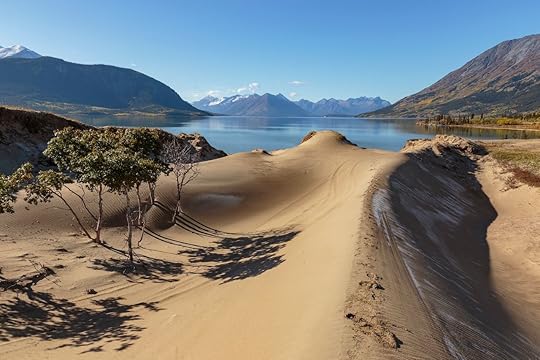
Photo: Jef Wodniack/Shutterstock
At just one square mile, Yukon’s Carcross Desert is pretty small. Although South Africa’s Red Desert Nature Reserve holds the title of the smallest desert in the world with a diameter of just 650 feet, the Carcross Desert is perhaps one of the world’s most unusual desert destinations to visit.
Just outside the town of Carcross, this desert owes its characteristics to a Pleistocene glacial lake of which it was once the bed. The area has remained an arid desert for thousands of years due to the harsh conditions and the nearby mountains that block incoming rains, but it’s home to a surprising amount of plant life.
To experience the Carcross desert in the best way possible, head there in the summer with your sandboard to slide down the desert dunes. 

More like this: 7 destinations to visit NOW before they’re overrun with tourists
The post 9 beautiful deserts you’ve never heard of appeared first on Matador Network.

Nellie Bly VR experience

If you admire Nellie Bly, the first woman to circumnavigate the globe (she did it in just 72 days in 1889), you’re in luck. Even if you can’t afford a single plane ticket, it’s easier than ever to relive Bly’s globetrotting experience. The Newseum, in collaboration with Vive Studios, is offering a virtual reality experience that takes you on an immersive journey inspired by Bly’s record-breaking trip around the world.
“Nellie Bly: The Virtual Reality Experience” lets you follow in Bly’s footsteps through Egypt, Sri Lanka, Hong Kong, San Francisco, and dozens of other locations. You’ll see first-hand the hardships she faced along the way, as well as her most memorable moments, including a crazy snowstorm, a stop in Singapore to buy a monkey, and the discovery of a challenger — another female journalist attempting the same feat.
The experience is meant primarily as an educational tool, situating Bly’s journey in a historical context, and providing extensive background on her previous reporting and accomplishments. Indeed, beyond the VR experience, Bly features prominently in Newseum’s 4D introductory film, which highlights important journalistic figures throughout history. Bly actually achieved fame in the world of journalism by faking insanity to gain admittance to Blackwell’s Island, a New York insane asylum, where she catalogued the poor conditions and abuses suffered by inmates.
Her biggest accomplishment, however, was no doubt the 72-day trip around the world. On the way, she even stopped in London to meet Jules Verne, the man who had inspired the journey in the first place. “If you do it in 79 days,” he reportedly told her, “I shall applaud with both hands.”
The VR experience is available for online purchase at only $4.49. 
H/T: Smithsonian.com

More like this: This UK traveler is following in the footsteps of a legendary explorer to raise awareness for female travel
The post New VR experience follows Nellie Bly on her 72-day journey around the world appeared first on Matador Network.

7 mouth-watering confectionaries

Local food is one of the main reasons we travel, whether we’re searching for the best Cuban sandwich in Tampa or tucking into a steaming bowl of Japanese ramen. Along with savory hankerings, our sweet tooth aches to be satisfied while on vacation, so we always need to find some sweet, tasty ways to satisfy our cravings. Thankfully, there are sugary hidden gems just waiting to be found all around the world. These seven sweets shops are famous for their cakes, pastries, and chocolates, and you should absolutely pay them a visit.
1. Miette in San Francisco, California

Photo: Miette
Meg Ray, the owner and creator of Miette, starting slinging her confections at the Berkeley Farmers’ Market in fall of 2001, and now her beloved shop serves her beautiful cakes and candies to California’s Bay Area. Miette is known for its simple preparations and minimal decoration, which lets the high-quality ingredients in every baked good shine. Think sugary treats like banana cream tarts and gingerbread cakes, shortbread cookies infused with lavender and walnut, and candies like English toffee and homemade sour patch kids. Miette ships its cookies and confections across the country, so you can taste them even if you’re not on the West Coast.
2. Shane Confectionery in Philadelphia, Pennsylvania

Photo: Shane Confectionery
Shane Confectionery has been satisfying Philly’s sweets lovers since 1863, which makes it the oldest continuously run confectionery in the United States. Brothers Ryan and Eric Berley purchased the shop in 2010. They stay true to the candy that made the original shop famous — think chocolates filled with buttercream and almond toffee crunch — but have expanded the line to include things like clear candy toys, bean-to-bar chocolate, and holiday pies. They’ve even collaborated with New Liberty Distillery on a Cacao Whiskey. Stop in to sample the mouthwatering confections and stay for a mugful of rich, warm drinking chocolate.
3. Fugetsu-Do in Los Angeles, California

Photo: Fugetsu-Do/Facebook
Seiichi Kito opened this iconic LA confectionery in 1903 after he immigrated to the US from Gifu, Japan, and it’s been operating in the city’s Little Tokyo neighborhood ever since. Seiichi’s grandson Brian runs Fugetsu-Do today, and it still serves the sweets of the family’s native Japan. Stop in to try the wonderful mochi, which are filled with things like white bean paste, chocolate, and peanut butter. The ornate treats are beautiful and colorful, which makes them the perfect gift for any occasion.
4. Pastelería Ideal in Mexico City, Mexico

Photo: Pasteleria Ideal/Facebook
Located in Mexico City’s bustling El Centro neighborhood, Pastelería Ideal is the perfect place to stop for a refuel after walking the crowded streets and seeing the sights of the historic city center. The shop was founded in 1927, and it serves traditional Mexican cookies, pastries, and bread. It’s famous for its special occasion cakes, which are displayed on the second floor for all to see. After perusing the opulent birthday and wedding cakes, tuck into a concha (a sweet bread roll) or pan dane (a Danish) filled with juicy native fruit.
5. Phillips Chocolates in Boston, Massachusetts

Photo: Phillips Chocolates/Facebook
If a confection is dubbed one of Oprah’s “Favorite Things” then you know it’s gotta be delicious. That’s exactly what she said about Phillips Chocolates turtles, a mouthwatering, classic combination of sticky caramel, hand-roasted nuts, and creamy chocolate. Phillips Chocolates is not only one of the best sweets shops in Boston but also the oldest, which means you absolutely need to pay your respects when visiting Beantown. In addition to its famous turtles, you can expect to find chocolate fudge and bark, cookies, brownies, freshly roasted nuts, jelly beans, and ginger sesame brittle.
6. Burch & Purchese Sweet Studio in Yarra, Australia

Photo: Burch & Purchese Sweet Studio/Facebook
Located in the suburbs of Melbourne, Burch & Purchese Sweet Studio has been serving sugary delights to locals and visitors alike since 2011. Husband and wife team Darren Purchese and Claire Claringbold are behind the shop with Darren as the master cake baker. The cake selection changes monthly to highlight seasonal ingredients, but you can expect to find plenty of cakes, jams and spreads (try the Salted Caramel Spread), lollipops, and cannelés on any given day. Each creation is so colorful and delicious, you’ll likely have trouble leaving once you step foot inside.
7. Vestri in Florence, Italy

Photo: Vestri Cioccolato/Facebook
There’s no shortage of quaint mom and pop shops in Florence, but Vestri is by far one of our favorites. This is the place for chocoholics to get their fix. The family-run business has been selling chocolate for more than 30 years, and it even has its own cocoa plantation in the Dominican Republic to ensure high-quality and ethical sourcing. Inside, you’ll find both bars that are pure chocolate and bars that are filled with custom toothsome creations, like white chocolate with sesame and pink Himalayan salt. Vestri also sells cocoa powder, hot chocolate mix, decadent truffles, and chocolate hazelnut spread that is 10 times better than Nutella. 

More like this: The sugar-coated, crispy-fried, deeply comforting guide to Dutch winter food
The post 7 confectionaries every person with a sweet tooth should visit appeared first on Matador Network.

Matador Network's Blog
- Matador Network's profile
- 6 followers



